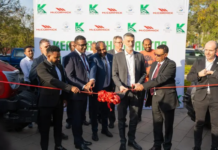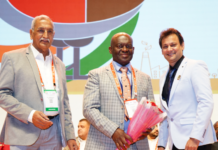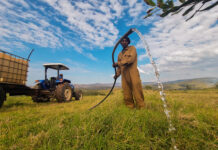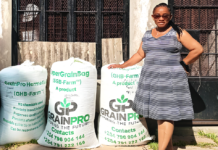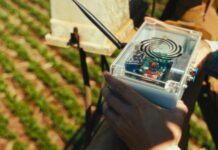(DLG). Alongside plant protection and soil tillage, sowing is one of the most essential processes in the cereal growing production system. Sowing determines the initial situation for the crop density and its development. In addition to the choice of sowing quantity, the technical requirements of the sowing technology also play an important role. Focus here is on uniform grain distribution over the land (longitudinal and lateral distribution) with precise depth placement at the same time. These parameters extensively determine the competitiveness of the individual plants. In addition to further parameters, partly in interaction with the seed, they influence the possible crop yield.
One trend that can be seen in the innovations registered this year is the simultaneous application of seed – in part, also of various crops and micro-granules in order to meet the requirements for multiple crops on the field. Distribution and precision placement are particularly important in this regard, as is documenting the position and quantity of the various combinations.
Row seeding with singling or precision seeding
Depending on which sowing system is used, row seeding systems with singling and also precision seeding systems are gaining in importance. Each system has different placement accuracies in longitudinal distribution. While precision seeding always singles and places the grains precisely, double or multiple placement in the seed row occurs due to volume dosing in the row seeding systems. Due to their simpler coulter depth control, however, the row seeding systems enable seed row spacings of 10 to 75 centimetres to be implemented and higher speeds (greater than 12 kph) to be achieved during seeding.
Depth placement measurement was one of the targets for innovations in the past, particularly in precision seeding. This year, automatic coulter pressure adjustment is an issue in row seeding. This is measured at the trailing pressure rollers. This means that, with changing soil resistances, the coulter pressure can be actively adjusted by the machines, thereby ensuring homogeneous depth placement. This leads to consistent field germination and therefore to competitive crops.
The objective should be to always aim for maximum precision and to minimise the coefficients of variation (CV) for longitudinal distribution, i.e. less than 10 percent for precision seeders and less than 100 percent for row seeding systems. Row seeding systems with additional singling achieve CV values of 50 to 60 percent.
Enabling mechanical maintenance
Whoever wishes to undertake mechanical crop maintenance in order to reduce the cost of chemical plant protection requires crops that are prepared for the mechanical cultivation processes. Footprint distribution is now a significant issue in all crops in order to enable mechanical work during post-emergence. After sowing, this includes rollers for promoting germination and emergence, harrows for aerating the soil in the event of crusting as well as hoeing between the rows and, depending on the grain spacing in the row, also between the plants in the row.
Status quo and outlook
Sowing technology is now more powerful and effective than it has ever been before. User requirements have also led to the fact that electronic seeding quantity adjustment is now widely fitted by numerous manufacturers. At present, important development focuses in volumetric row seeding systems are above all the additional precision placement of fertiliser or micro-granules and consistent depth placement adjusted to the requirements of the soil. The right technology is important for efficient, success-driven and inexpensive sowing. Local conditions and the future requirements for growth and weather are already determining the requirements for the technology’s equipment.
It is necessary to consider future operational procedures, particularly when investing in new sowing technology. Increased seed row spacings in row seeding systems equate to fewer units, higher vehicle speeds and advantages in mechanical plant protection. In precision seeding, particularly in the case of maize, the trend is shifting towards tighter seed row spacings and reduced under-root fertiliser quantities. This means more units per metre of working width. The advantages of tighter seed row spacings in this case are better standing area distribution and root penetration, a reduced risk of erosion and lower residual nitrate contents after harvesting.
In addition to simple operation, uniform seed bed preparation and consistent seed depth placement are of particular importance. On the whole, the sowing technology offers various options for further improvement that will impact positively in terms of productivity and sustainability. The innovations in the area of sowing that are on show at this year’s Agritechnica lead to expectations of an exciting and varied exhibition.



